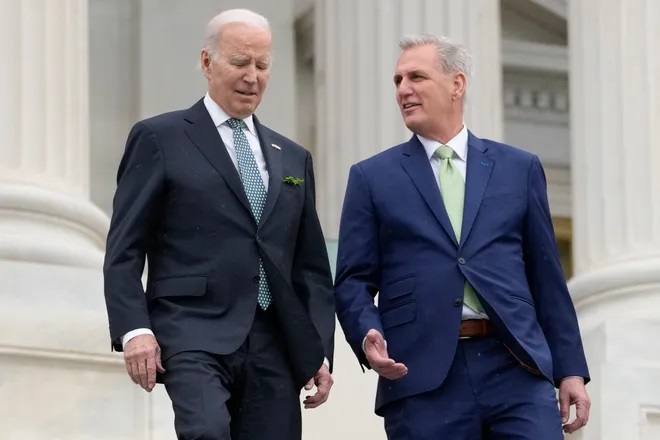On May 1, Treasury Secretary Janet Yellen warned in a letter to House Speaker Kevin McCarthy that the U.S. may run out of measures to pay its debt obligations by June 1. A potential crisis now looms: the unprecedented default on Treasury debt. To prevent this catastrophic event, the government will need to raise the debt limit.
What is the debt ceiling? The debt ceiling is the maximum amount that our government can borrow to pay its bills and allocate funds for future investments.
On Jan. 19, the U.S. government hit its borrowing limit, $31.4 trillion. Since then, the U.S. Treasury has been taking “extraordinary measures” to ensure that the government can continue to pay its bills.
Because the government spends more than the revenue it receives from taxes, it needs to borrow to cover the deficit. Once the U.S. government hits its debt limit, the Treasury cannot issue more securities. The debt ceiling has been raised 78 times since 1960, under both Democrat and Republican presidents.
The failure of our government to make timely payments on its obligations has significant downside. Because the U.S. government has never defaulted on its commitments, the dire economic consequences are uncertain. The amount of the damage depends upon on how long the situation lasts, how it is managed, and the extent to which investors alter their views about the safety of U.S. Treasuries. Janet Yellen, U.S. Treasury secretary, wrote in a letter to Congress earlier this year: “Investors would lose faith in the U.S. dollar, causing the economy to weaken quickly. Job cuts would be imminent, and U.S. federal government would not have the means to continue all of its services.”
On April 26, Republicans passed legislation in the House of Representatives that would raise the debt ceiling by $1.5 trillion, but mandated $4.8 trillion in spending cuts over the coming decade. House Democrats argue that Congress should raise the debt limit without conditions. Democrats oppose negotiating spending cuts over the debt ceiling. Instead, they have argued that Republicans should raise their spending cut objectives during budget negotiations, not over the debt ceiling.
An outright default — a delay of payment of interest or principal of U.S. debt — would undermine the reputation of the Treasury market as the safest and most liquid in the world. It would result in a severe disruption to the Treasury securities market with acute spillovers to other financial markets. It would add to the cost and availability of credit to households and businesses.
There is uncertainty about how the Treasury will operate when we can no longer borrow. In 2011, when the Treasury faced similar constraints, they continued to pay interest on our Treasury securities as it came due. The Treasury delayed payments to agencies, Social Security beneficiaries and Medicare providers.
In October 2013, the Federal Reserve simulated the effects of a debt ceiling impasse that lasted one month. Fed economists estimated that an impasse would lead to an 80-basis point increase in 10-year Treasury yields, a 30% decline in stock prices and a 10% drop in the value of the dollar.
In 2021, when failure to raise the debt ceiling threatened the Treasury’s ability to pay its obligations for several months, Moody’s Analytics concluded that unemployment would increase by 5 million and real GDP would decline by almost 4%.
In conclusion, raising the debt ceiling is crucial. Political, financial and economic factors all come into play. It could lead to a financial crisis, higher interest rates, a weakened U.S. dollar, a government shutdown and damage to the country’s credit rating. To avoid these potential impacts, lawmakers must raise the debt limit in a timely manner and work toward addressing the underlying issues that contribute to our country’s growing debt.
Originally published in the Sarasota Herald-Tribune




